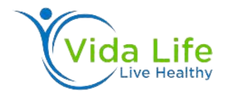Headache pain can be intense and debilitating, lasting hours or days and often leading to other symptoms like light/sound sensitivity or nausea.
An headache diary can help identify triggers and collaborate with your healthcare provider on developing an effective treatment plan. Over-the-counter and prescription medicines may provide relief; please see here for more details.
1. Rest
Rest is key to managing headaches effectively, so aim to establish a regular sleep schedule – particularly on weekends – and limit your exposure to stimulants like screens, sugary food products, alcohol or caffeine before bedtime.
Reducing stress through relaxation techniques like yoga or meditation is one of the keys to overall well-being, including regular exercise that releases natural painkillers (endorphins) and healthy eating habits such as omega-3 fatty acids, potassium, and magnesium can even prevent headaches for some individuals.
2. Cool compresses
Headaches are an all too common condition among individuals of all ages and it is essential that effective relief be found to alleviate pain, reduce inflammation, and promote relaxation. Cold compresses offer an inexpensive yet efficient home solution to address tension headaches, sinus headaches or migraines.
Applying a cold pack to the skin causes vasoconstriction, narrowing blood vessels and decreasing blood flow, which helps with inflammation and relieving pain. Heat therapy promotes vasodilation – widening blood vessels and increasing circulation – which may benefit muscle tightness or tension headaches. Using either compress for 15 minutes can provide immediate relief from symptoms and promote healing.
3. Massage
Massage involves pressing, rubbing and manipulating skin tissues as a form of physical therapy to promote mental and physical well-being. While some view massage therapy as an indulgence or luxury for the wealthy, others see it as an integral component of mental and physical wellbeing – particularly useful when treating headaches.
Based on your individual needs, massage therapists may suggest essential oils that can promote relaxation and stress relief. Inhalation or topically application may provide pain relief.
Head massage can provide significant relief to those suffering from tension or migraine headaches by relieving symptoms by relaxing strained muscles at the source of their discomfort. Researchers conducted one study which concluded that massage therapy targeted towards myofascial trigger points in the upper back and neck reduced both headache frequency and intensity significantly.
4. Over-the-counter pain relievers
Most people who experience headaches turn to over-the-counter medicines such as acetaminophen or ibuprofen for relief. But overusing such medications may result in dangerous “medication overuse headache,” says Van Groningen. These headaches occur from taking too many doses over a short period of time – such as multiple days per week.
Some OTC medications contain ingredients unsuited to treating headaches, such as caffeine and decongestants, that are more appropriate for treating colds or sinus issues; however, these drugs may lead to headaches in certain people.
Avoid taking multiple pain medicines at once unless they contain different active ingredients (for instance Tylenol and Motrin both contain ibuprofen), to avoid an overdose. If over-the-counter (OTC) medicines don’t help or cause side effects, visit a physician as other solutions may be prescribed.
5. Exercise
Though strenuous exercise may trigger migraine attacks, studies show that regular moderate exercise reduces headache frequency.
Exercise helps relieve tension and stress–two common headache triggers–by lowering blood pressure, relieving tight muscles and producing feel-good endorphins. Furthermore, exercise also increases circulation and oxygen levels within your body.
Before engaging in any physical activity that involves vigorous movement, always begin slowly and increase your pace gradually. Be sure to drink water prior and during physical activity so as to prevent dehydration. If you experience headaches after exercise, contact a healthcare provider immediately so as to rule out other serious medical issues as soon as possible and identify ways to modify exercise routines to reduce migraine risk.

